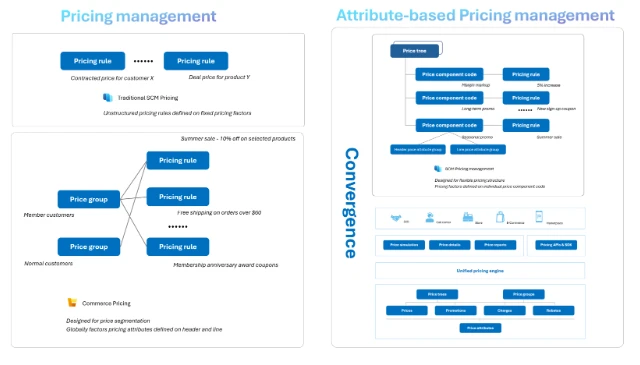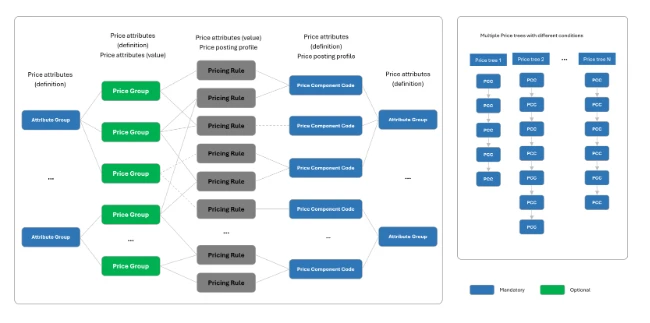In today’s fast-paced digital marketplace, pricing plays a pivotal role in the success of any business. It is not merely about setting the right price for your product or service, but about an entire strategic framework that aligns with customer expectations, competitive positioning, and profitability. Welcome to the world of Unified Pricing Management (UPM), a revolutionary approach that simplifies complex pricing decisions.
What is Unified Pricing Management?
Unified Pricing Management (UPM) is a comprehensive system that integrates various aspects of pricing – from strategy and planning to execution and analysis. Unlike traditional methods that often consider pricing in isolated silos, UPM provides a holistic view, aligning all pricing activities across the supply chain, commercial sales, and retail environments.
By leveraging advanced tools and technologies, UPM unifies disparate pricing strategies into a coherent framework, enabling businesses to respond dynamically to market changes and customer demands.
Attribute-Based Pricing in Dynamics 365 Supply Chain Manamgement Explained
A cornerstone of Unified Pricing Management is Attribute-Based Pricing (ABP). This method assigns prices based on the inherent characteristics or attributes of a product or service. Attributes can include features, quality, user ratings, brand value, or historical performance.
For instance, consider a range of smartphones. Each model has a distinct set of features – camera quality, storage capacity, design, etc. With Attribute-Based Pricing, each attribute contributes to the overall pricing decision, ensuring that customers perceive the value they are getting for their money.
SCM Pricing Management: Enhancing Efficiency
Supply Chain Management (SCM) Pricing Management integrates pricing strategies with supply chain efficiencies. By considering costs, supplier pricing models, and logistics, businesses can develop a pricing strategy that minimizes costs while maintaining competitive pricing.
Benefits of SCM Pricing Management:
- Cost Optimization: By understanding costs along the supply chain, pricing strategies can be fine-tuned to maximize margins.
- Increased Agility: Faster response to supplier cost changes and market dynamics.
- Efficiency Gains: Reduces waste and improves resource allocation.
Commerce and Retail Discounts: Strategic Leveraging
Retail discounts are powerful tools to drive customer engagement and increase sales. Unified Pricing Management provides tools to effectively implement and manage discounts without compromising profitability.
Effective Discount Strategies:
| Strategy | Description |
|---|---|
| Seasonal Discounts | Reducing prices during specific seasons to boost sales volume. |
| Volume Discounts | Offering discounts based on the number of units purchased. |
| Loyalty Programs | Providing discounts for repeat customers to enhance loyalty. |
Understanding Price Trees
Price Trees are visual representations that map out different pricing paths based on various customer segments or product lines. A Price Tree helps in understanding the pricing flow and the impact of different price points.
Usage:
- Visualize and assess pricing strategies.
- Identify potential market segments.
- Optimize pricing paths for different customer demographics.
Setting Up and Managing Price Groups
Price Groups allow businesses to unify pricing across similar product categories or customer groups. By managing prices in groups, businesses achieve consistency and simplify complex pricing structures.
Steps to Setting Up Price Groups:
- Identify Similar Products/Customers: Group similar items or customer types together.
- Standardize Pricing Rules: Apply consistent pricing rules across the group.
- Monitor and Adjust: Continuously evaluate group performance and adjust as necessary.
Pricing Strategy and Solutions
Developing a pricing strategy is crucial for optimizing revenue and profitability. UPM provides solutions that analyze market data, consumer behavior, and competition to derive the best pricing tactics.
Factors in Pricing Strategy:
- Market Positioning: Align prices with brand perception.
- Competitive Analysis: Continuously analyze competitor pricing.
- Consumer Insights: Use data analytics to capture customer preferences.
Competitive Pricing: Staying Ahead
Competitive pricing is essential to gaining market share. UPM uses competitive analysis tools to help businesses identify market trends and optimize pricing.
Competitive Pricing Tactics:
- Price Matching: Aligning prices with competitors to prevent loss of business.
- Dynamic Pricing: Adjust prices based on real-time market conditions and demand.
- Value-Based Pricing: Align pricing with perceived customer value.
Conclusion
Unified Pricing Management offers a structured, data-driven approach to managing prices across a diverse business landscape. By leveraging it, businesses can ensure their pricing strategies align with market demands and enhance overall profitability.
Frequently Asked Questions (FAQs)
What is Unified Pricing Management?
UPM is an integrated system that manages all aspects of pricing, from formulation to execution, enhancing responsiveness to market changes.
How does attribute-based pricing work?
It involves setting prices based on key attributes of a product or service, ensuring that customer value perception is matched.
What are the benefits of SCM pricing management?
Benefits include cost optimization, efficiency gains, and increased agility in pricing decisions.
How can businesses leverage retail discounts effectively?
Using targeted discounts, such as seasonal and volume discounts, businesses can boost sales without sacrificing margins.
What are price trees and how are they used?
Price Trees are visual representations to map pricing strategies and optimize pricing based on different segments.
How to set up and manage price groups?
By grouping similar products or customers and applying consistent pricing rules, businesses can streamline their pricing strategy.
How does Unified Pricing Management benefit customer satisfaction and profitability?
UPM aligns pricing strategies with customer expectations, enhancing satisfaction while optimizing revenue through strategic pricing management.
#MSFTAdvocate #AbhishekDhoriya #LearnWithAbhishekDhoriya #DynamixAcademy
References & Read More:
- Transforming Sales with Dynamics 365 and Copilot for Sales: A Beginner’s Guide
- The Beginner’s Guide to Microsoft Copilot Labs and Copilot Vision: Unleashing the Future of AI-Driven Productivity
- Unlocking Sales Success: A Beginner’s Guide to Microsoft 365 Copilot for Sales
- Copilot Studio Tutorial EP#1: Understanding What is Microsoft Copilot Studio? A Comprehensive Guide for Beginners
- Copilot Studio Tutorial EP#2: How to Add Knowledge to Copilots in Copilot Studio?
- Copilot Studio Tutorial EP#3: How to Create and Manage Topics in Copilot Studio?




